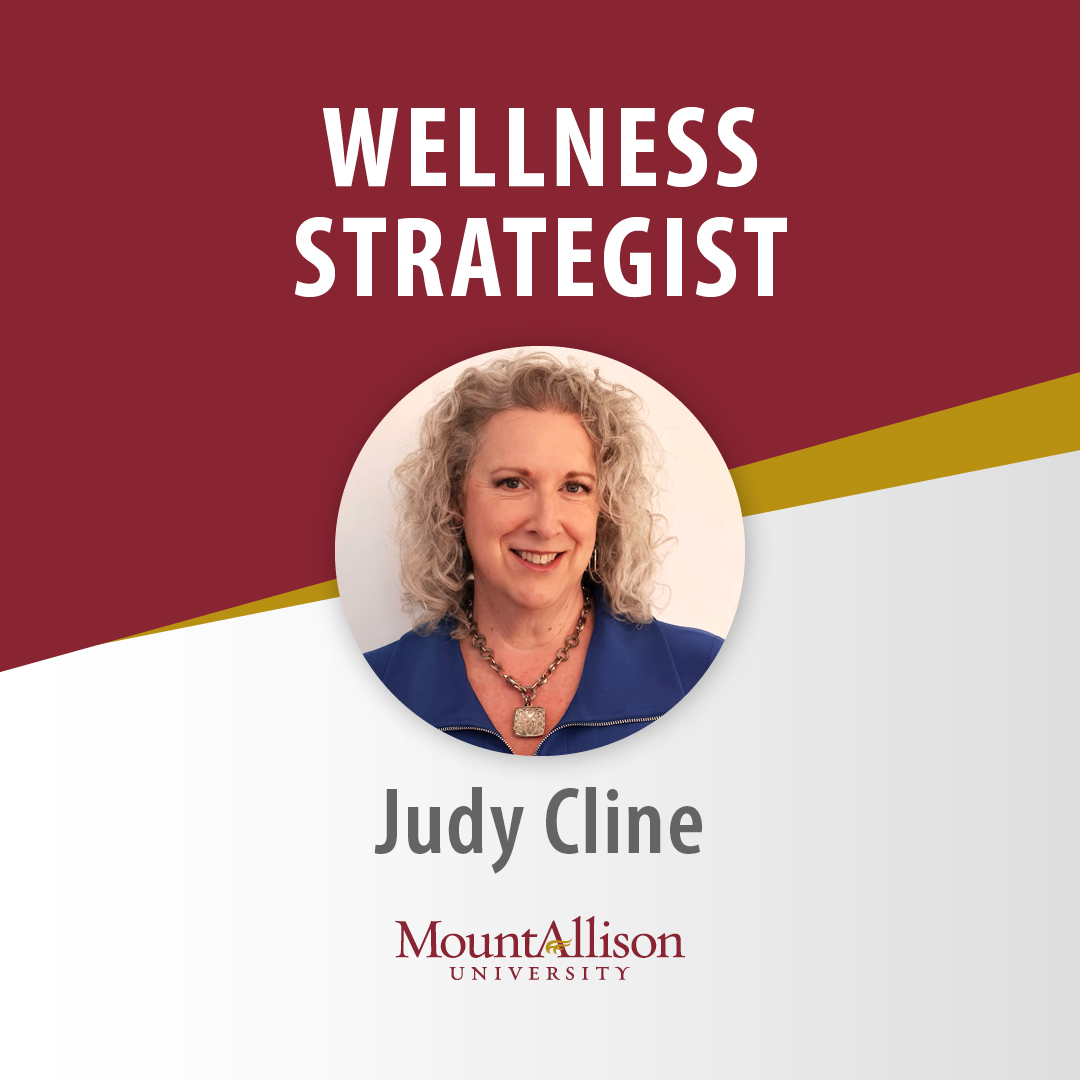Health and wellness promotion, education, and programming to the entire Mount Allison community.
Wellness Strategist
The wellness strategist works with students, faculty, and staff to help foster positive mental health and overall well-being and further the progress of mental health literacy and harm reduction education and awareness on campus.
They promote positive mental health and wellness through:
- workshops
- campus events
- awareness campaigns
- education outreach programming
Contact: Judy Cline, jcline@mta.ca

Navigate MtA Student Wellness Program
Navigate MtA Student Wellness Program is a student resource for mental health and wellness information and initiatives.
In collaboration with the Mental Health/Harm Reduction Outreach Coordinator, Navigate team members are students who navigate, educate, and promote student wellness on campus.
The program’s goal is to:
- take a proactive, collaborative approach to enhance the knowledge of mental health and wellness supports available to students
- promote help-seeking behaviour amongst students by reducing obstacles to using resources
- increasing awareness of Wellness Centre services
Contact: navigatemta@mta.ca
Instagram: @naviagatemta
Website: Navigate Student Wellness Hub

Other student engagement and advocacy opportunities in health and wellness
HEALTH AND MENTAL HEALTH INTERNS
Students are hired each academic year to work as health and mental health interns.
- The health intern works with the registered nurse/educator at the Wellness Centre to make the Mount Allison community increasingly health conscious and to encourage healthy living through ongoing health awareness, communication, and education programming initiatives. The intern may assist in health communications such as submissions to The Argosy, the Student Health 101 magazine, and materials for health and wellness awareness campaigns. For more information on this role, please contact the registered nurse/educator at health@mta.ca or the current health intern at healthintern@mta.ca
- Mental health interns typically work with the mental health/harm reduction educator. They help facilitate outreach educational opportunities and mental health and wellness programming and may assist with social media, website updates, data collection, and program evaluation, among other duties.
STUDENTS CLUBS & SOCIETIES
There are a number of other student clubs and organizations each year that focus on health and mental health-related activities.
- Change Your Mind
- Jack.org
- ACID — Association of Chronically Ill and Disabled Students
- SAMHI — Student Athlete Mental Health Initiative
Explore current active clubs and societies at Mount Allison: MASU Clubs & Societies



